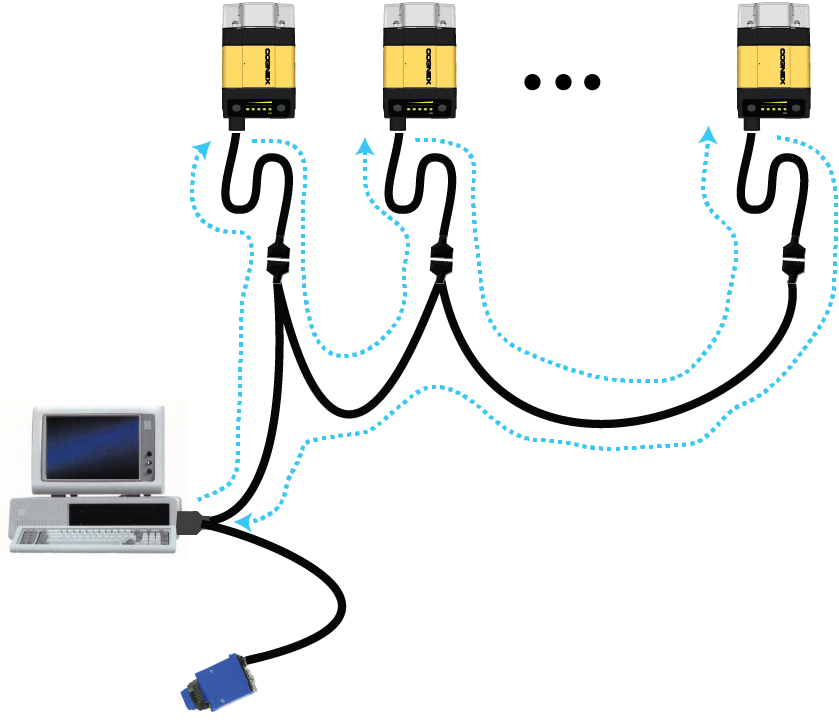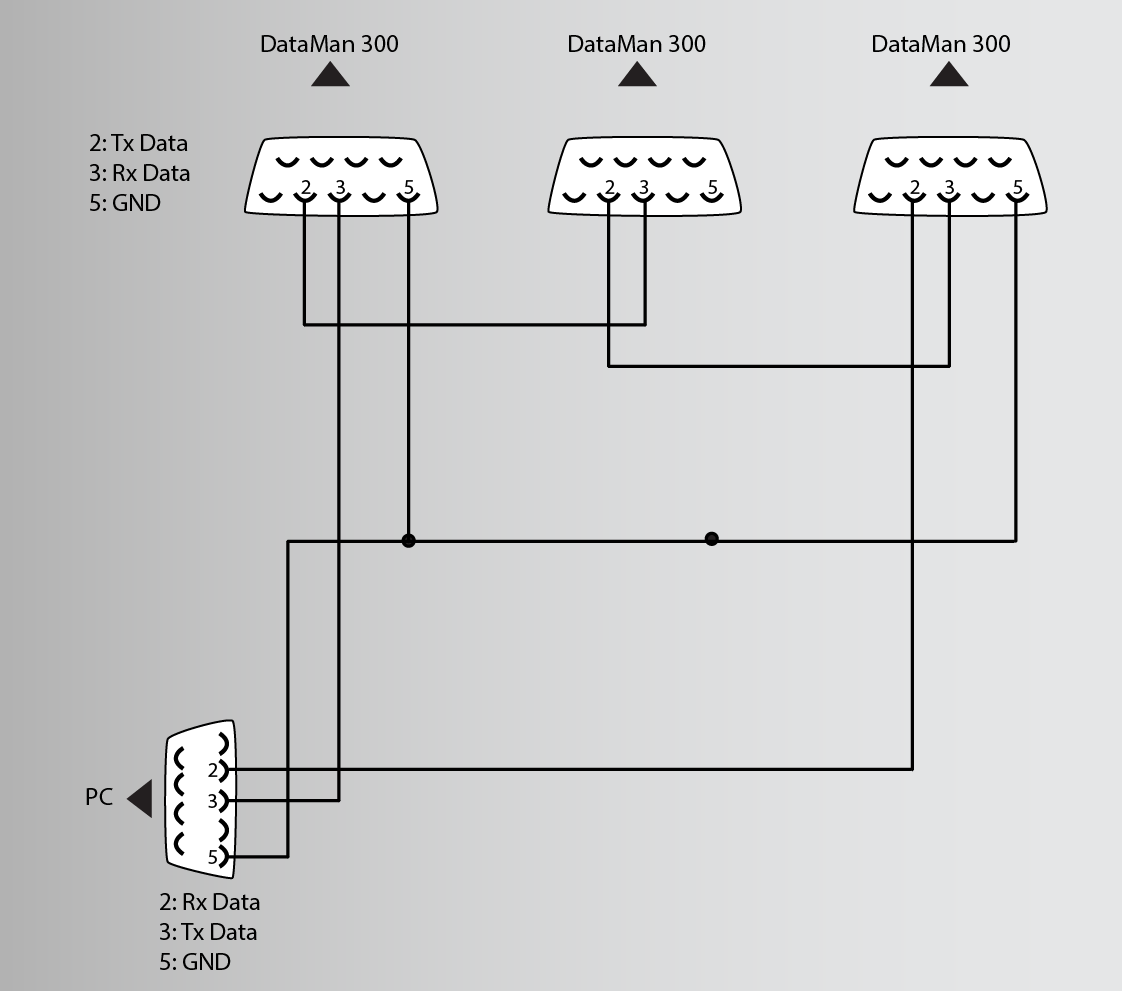Multi-Port Connections
You can connect multiple DataMan 300 readers to a single PC (or other device equipped with a serial port) using a multi-port connection.
A multi-port connection creates a daisy-chain of readers. Each reader receives serial data from the previous reader and transmits it to the next reader. When a reader transmits data, it is passed through each of the readers in the chain between it and the PC.

You must construct your own cable that meets the requirements of your system configuration.
The cable must provide a DB-15 connector for each DataMan 300 and a DB-9 connector for the PC serial port. Each DB-15 connector must provide Tx Data, Rx Data, Trigger (Input 0), ground, and DC power. The Tx Data and Rx Data pins on adjacent connectors must be connected to provide the multi-port connection.
The following diagram shows how to create a multi-port cable for a 3-reader system. In the example, all the readers share a common trigger. It is also possible to wire individual triggers for each reader.

You must connect each DataMan 300 to the DataMan Setup Tool using a USB connection and set the DataMan for multi-port operation. To configure a DataMan 300 for multi-port operation, click the Enable Multi-Port (RS-232 Sharing) checkbox in the Communications application step's Advanced tab.
There is no guaranteed delivery order when multiple readers transmit data using a multi-port connection; read results can arrive at the PC in any order. You can configure each DataMan 300 reader in a multi-port connection to add identifying data to each read result. Your PC application can then determine which reader produced a specific read result.
- In the Format Data application step, enable the Basic Formatting radio button.
- Check Standard for each symbology that you are using.
- Switch to the Standard tab and enter text in the Leading Text field.
- You can also add trailing text by entering text in the Terminating Text field.
Keep the following guidelines in mind as you design your system:
- Make sure that the maximum cable length between any two DataMan 300 readers or between the PC and any DataMan reader is no greater than 15 meters.
- There is no fixed limit to the number of DataMan 300 readers that you can connect to a single PC. Each reader introduces a delay of about 100 ms when it retransmits received serial data. If you have 5 readers, this means that there will be a 400 ms delay between the time the first reader in the chain transmits data and the PC receives it.
- Each DataMan 300 reader must receive a hardware trigger signal on its Input 0 line. You can wire the input ports to a common trigger signal or you can provide individual triggers for each reader.
- Each DataMan 300 reader must be individually configured for multi-port operation, and you must perform this configuration using a USB connection.
- If any reader in the multi-port chain loses power or becomes disconnected, then no data from any other reader will be transmitted.
- If a DataMan 300 is transmitting its own read result, it will buffer any data received from another reader until it has finished its own data transmission. If a DataMan 300 is transmitting another reader’s data, it will buffer its own data if it receives a trigger signal while it is processing the other reader’s data.
- If you use a single power supply for multiple readers, make sure that the power supply can provide enough power for all of the readers.